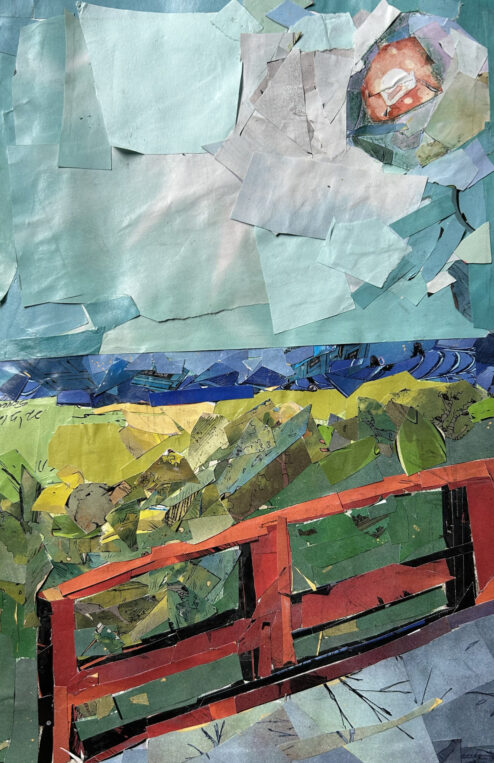Shifted Scenes
by Eshitha Rao

Eshitha Rao is an artist from Massachusetts who specializes in traditional acrylic paint and digital art. She is currently the illustration editor and contributor to the online magazine, Culturator. Her written works and visual art pieces are published in online and physical magazines and have been featured multiple times at local art galleries in her town. Most of her art is centered around her community, as she spends her free time helping the local art studios with their independent projects and painting the windows of Open Table, a food bank in Massachusetts, to help promote new food programs. Outside of her art, she enjoys iced caramel lattes, reading novels, trying new foods, and shopping for clothes.
Artist’s Statement:
The commonly accepted theory behind the moon’s formation is that Theia crashed into Earth millennia ago, and the molten debris reformed itself into the moon in orbit. But what if the moon didn’t completely heal? “Shifted Scenes” envisions this scenario as it depicts an ocean landscape amidst the new moon with its burning hot magma and core visible. I chose this idea because the moon is integral to our daily lives – we see it almost every night and stare in wonder whenever slight changes occur, such as a blood moon or a full moon, but we truly take for granted its existence. Our lives as humans would be very different with this unformed moon, changing the tides, times at which the moon is visible, and possibly becoming a symbol of fear when looking up at the night sky and seeing the magma and core, which burn at temperatures beyond comprehension, even though the Earth itself would not physically change.
That is why the scenery is relatively peaceful – to lull the viewer into a false sense of security until they notice the planet and the conversation shifts to its existence and meaning. The medium I used, magazine and comic strips, plays into this idea, as collage is often used to induce feelings of mystery and confusion due to the various design elements within the preexisting material, creating a dense web of colors and sensors that the viewer must decipher. It also helps to differentiate that this is a parallel world, as the style isn’t realistic; it’s meant to give the illusion of the Earth while making it clear that the setting is much different.
